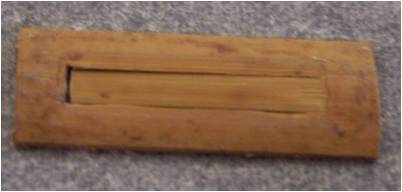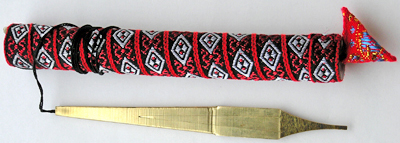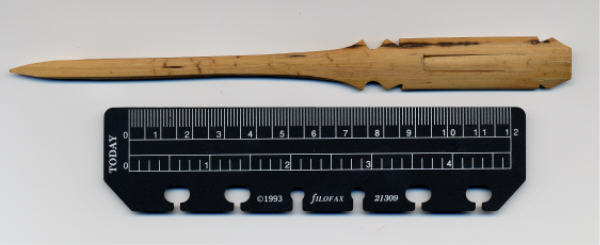Buffalo Horns and Frog Calls: Some Ancient Free Reed Instruments from Southeast Asia
James P. Cottingham – jcotting@coe.edu
Coe College
Cedar Rapids, IA 52402
Popular version of paper 3aAAa3 presented the 160th ASA Meeting in Cancun, Mexico
Free reed instruments were widespread in Southeast and East Asia for long before the “modern” Western free reed instruments, including the harmonica and the accordion-concertina “squeezebox” family, were developed in Europe starting about two hundred years ago. In the last 20 years there has been considerable interest in the acoustics of free reed instruments, including the Asian free reed mouth organs. This paper deals with two of the very simplest instruments of this type: the enggung of Bali, a single free reed without pipe-resonator, and the free reed buffalo horn, in which a single free reed is mounted in the side of the animal horn. It is hoped that study of these simple instruments will improve understanding of the acoustics of the free reed and the interaction of the reed with a resonator.
A reed is a generic name for a vibrating tongue used as the sound generator in a wind instrument. What distinguishes the free reed is that its dimensions are slightly smaller than the opening that it covers, so that when blown it vibrates back and forth through the opening in the manner of a swinging door. In the Asian instruments the free reed is typically constructed by cutting three sides from a single strip of material, very often metal but sometimes bamboo or other plant material.

Figure 1. A free reed from a Southeast Asian gourd pipe.
Before considering free reed wind instruments, we can look at some related Southeast Asian instruments of ancient origin. These are the mouth-resonated lamellophones (“Jew’s harps”) common throughout the region. They are made (like free reeds) by cutting three sides of the vibrating tongue from a single piece of wood, bamboo, or metal. The tongue cannot be plucked directly, but is excited by plucking the frame. The instrument is played by placing the reed tongue over the lips of the player and using the vocal tract as a resonator. Traditional uses of these instruments include disguising of the voice and imitation of natural sounds (such as the call of frogs) in certain rituals. An example of such an instrument from Vietnam is shown in Figure 2 together with a sound sample.

Figure 2. A mouth-resonated lamellophone from Vietnam, constructed from a single piece of brass. Play the sound of a lamellophone.
Although the origins of the Southeast Asian free reed instruments are lost in prehistory, there seems to be is a strong implication that the mouth-blown free reeds and these plucked instruments share a close relation. With some instruments, depending on the details of construction, it is possible to produce tones by blowing as well as plucking. This is demonstrated in the case of the huntoong shown in Figure 3. Although this instrument is probably intended as a plucked instrument it is possible to make it also sound as a wind instrument. In the sound file one can hear the instrument first plucked, and then blown.

Figure 3. A huntoong from Thailand. Play the sound of a huntoong.

Figure 4. The enggung from Bali. Play the sound of the enggung.

Figure 5. A khaen from Northeastern Thailand
The free reed horn is one of the simplest of the free reed mouth organs, traditionally used for used for ritual purposes or alarm signals. It consists of a horn of a water buffalo or cow hollowed out and fitted with a single metal or bamboo free reed mounted in the side. Three basic pitches are possible, one with both ends of the horn open, one with the narrow end closed with a hand, and the third with both ends closed. In some cases the narrow end of the horn is closed, allowing just two pitches. The pitch can be bent between these basic pitches by partially covering the open end. This can be heard in the sound file accompanying Figure 6.
Conclusion
As well as being of musicological and cultural interest, the study of these instruments does open new possibilities in acoustics research. The single reed enggung opens possibilities for research into the role of the vocal tract in pitch bending involving a resonator (the vocal tract) on the “upstream” side of the reed. The characteristics of the buffalo horn add to studies of coupling between the free reed and a “downstream” resonator, such as a pipe.
Acknowledgement
The sound examples as well as the photos for Figures 3, 4, and 6 are reproduced with the kind permission of Pat Missin, and can be found on his website: [http://www.patmissin.com/]. Pat Missin is the player in the sound samples.

Figure 6. A free reed buffalo horn (with narrow end closed). Play the sound of a free reed buffalo horn.
